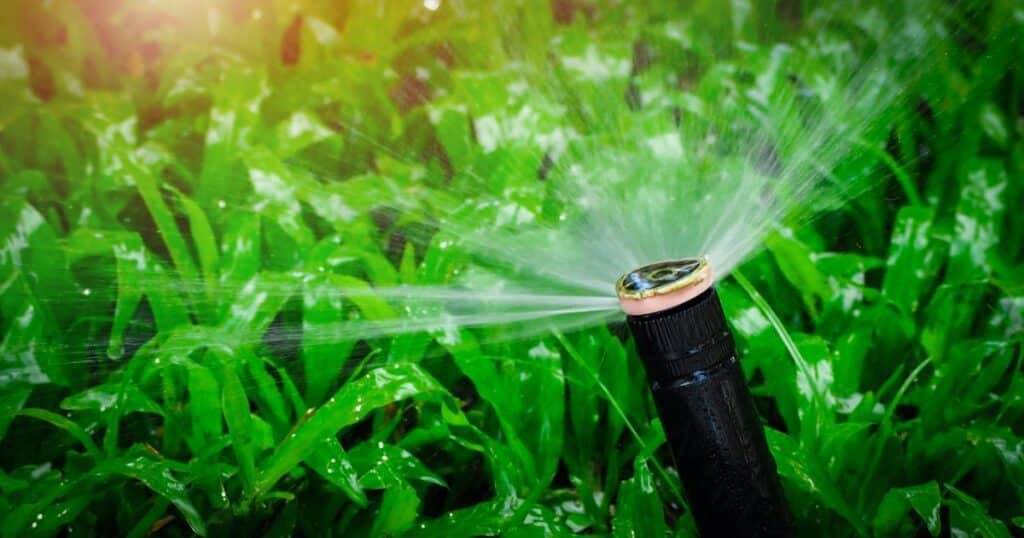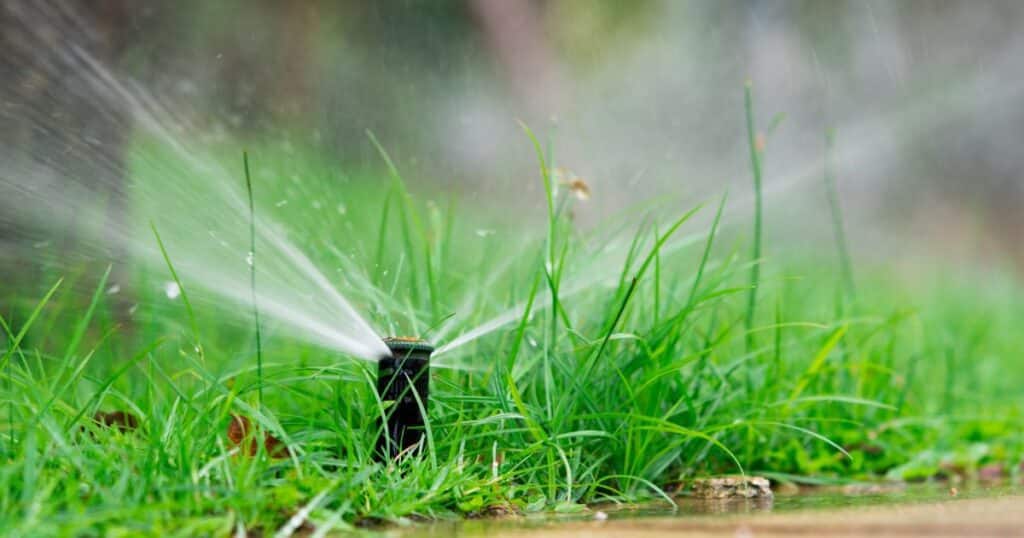
Are you tired of the old-fashioned method of digging up your yard in search of buried sprinkler lines? Wondering how to find sprinkler lines without digging? Well, fear not because we’ve got a treasure-hunting adventure in store for you! In this guide, we’ll reveal the secrets of finding those elusive sprinkler lines without even breaking a sweat. So put away your shovel and get ready to embark on a journey that will leave your lawn intact and your sprinklers flowing freely. Trust us, you won’t want to miss out on this magical discovery!
To find sprinkler lines without digging, you can use a variety of non-invasive techniques. One method is using a sprinkler line locator device that can detect the presence of underground pipes. Another option is employing ground-penetrating radar technology, which allows you to map out the location of your sprinkler lines without disturbing the soil. Additionally, you can trace the sprinkler lines by following visible markers or using specialized equipment that can detect changes in the moisture levels of the ground.
Importance of finding sprinkler lines without digging
The location of buried pipes can be unpredictable, especially in older homes. Even if you have blueprints or plans for your property, the pipes may have shifted over time or been installed differently than what was originally intended. When you dig blindly for pipe detection purposes, you put yourself and your property at risk.
You may hit an electrical wire or gas line that could cause significant damage. In addition to safety concerns, digging can also be expensive in terms of time and money.
It requires tools such as shovels and backhoes and may require permits from local authorities depending on the depth of the excavation. All these costs can add up quickly.
Benefits of avoiding digging for sprinkler line detection
By avoiding the need for excavation when detecting sprinkler lines, you save yourself a lot of time, money, and hassle. The equipment used in non-destructive detection methods is less expensive than traditional excavation methods because they do not require heavy machinery or costly permits.
Additionally, non-destructive detection methods offer precise information about where underground pipes are located without causing any damage in the process. You’ll get clear indications about which parts of your property have irrigation systems running underneath them so that future excavations or modifications can be performed with greater accuracy.
Using non-destructive methods preserves your property’s appearance by avoiding unsightly holes dug up during traditional pipe location processes. Now that we’ve covered why it’s important to avoid digging for sprinkler line detection, let’s dive into the specific methods available for doing just that.
How To Find Sprinkler Lines Without Digging?
Before digging up a property to locate sprinkler lines, it is crucial to consider alternative methods that can save time and money. Technology has provided us with effective ways of locating buried pipes without necessarily having to dig up the property. The following are some of the most commonly used techniques:
Using a Metal Detector
A metal detector is an excellent tool that can help locate sprinkler lines accurately. This equipment works by sending out an electromagnetic field that interacts with any metal object in its path, producing a signal that can be detected by the device.
The first step when using a metal detector is to mark off any visible sprinkler heads or surface markers, as this will give you a general idea of where to start your search. Once you have identified these markers, sweep the metal detector over the area slowly, waiting for it to produce a signal indicating the presence of metal.
A significant benefit of using a metal detector is that it helps identify not only the location but also the depth of buried pipes accurately. However, it does have some limitations, as some materials do not respond well or at all to electromagnetic waves.
Using Ground Penetrating Radar (GPR)
GPR is another useful non-invasive technique used in locating underground structures such as sprinkler lines. The method works by sending radar signals into the ground and analyzing how they bounce back from various buried objects.
The GPR machine produces images based on this analysis, which can be used to locate sprinkler lines precisely. To use this technique effectively, you will need specialized equipment and software knowledge on how to read GPR images accurately.
The primary advantage of using GPR over other methods is its ability to produce detailed images that provide accurate location and depth of buried pipes. However, GPR equipment is expensive to purchase or rent, which can be a significant limitation for small property owners.
Using Infrared Thermography
Infrared thermography is another non-invasive technique that can be used to locate buried sprinkler lines. The method involves using an infrared camera that detects temperature variations in the ground caused by the presence of underground pipes. The first step when using infrared thermography is to wet the surface area with water to ensure maximum accuracy.
Afterward, you can scan the area with an infrared camera looking for temperature variations that indicate the presence of buried pipe. The primary benefit of using this technique is its speed and accuracy.
Additionally, it does not require special training or equipment and is relatively affordable. However, it is limited by factors such as soil moisture content and differences in ambient temperature that can affect readings.
Using Electronic Marker System (EMS)
An electronic marker system (EMS) works through radio-frequency technology and can be used to locate underground utilities such as sprinkler lines. The system works by placing electronic markers at strategic points along pipelines or utility lines. To use this technique effectively, you need a receiver device that can pick up signals from these markers and provide directional information on where the pipes are located.
The main advantage of EMS over other techniques is its ability to provide real-time information on the location of underground pipes with minimal effort. However, it may not work well in situations where there are multiple utilities buried in close proximity or if there are no accessible entry points for placing markers.
RELATED: How Deep Are Sprinkler Lines: Steering Clear of Costly Surprises
Best Practices for Finding Sprinkler Lines without Digging
To ensure accurate detection when locating sprinkler lines without digging up your property, it’s essential to follow some best practices. These include:
Preparation before starting the process
Before using any method to find sprinkler lines, it’s important to prepare the area by clearing any debris or surface clutter that may hinder the detection process. You can also mark off any visible sprinkler heads or surface markers to give you a general idea of where to start your search.
Tips for accurate detection
To ensure accurate detection, sweep the detection device in a systematic pattern over the area being searched, covering all available ground. Also, use more than one technique if possible, as this can provide additional confirmation of detected utilities and improve accuracy.

Safety measures during
It’s essential to take safety precautions when locating sprinkler lines without digging up your property. This includes wearing protective gear such as gloves and eyewear when using tools like metal detectors or GPR equipment that emits electromagnetic radiation.
Finding buried sprinkler lines without digging up your property is achievable with various non-invasive techniques such as metal detectors, GPR equipment, infrared thermography, and electronic marker systems. By following best practices, such as preparing the area beforehand and taking safety measures during detection processes, you can locate underground pipes with high accuracy while saving time and money.
RELATED: How to Raise Sprinkler Heads: Improving Watering Efficiency
Frequently Asked Questions
How do I find a buried sprinkler box?
To find a buried sprinkler box, you can use a metal detector or a pipe locator device to detect the presence of the box underground. Additionally, visually following the path of the sprinkler lines can help you locate the general area of the box.
How far in the ground are sprinkler lines?
Sprinkler lines are typically buried at a depth of 6 to 8 inches in residential settings. However, the exact depth may vary depending on local codes and regulations, as well as the type of soil and climate conditions.
How low are sprinkler lines buried?
Sprinkler lines are usually buried at a depth of 6 to 8 inches in residential applications. However, the depth may vary depending on local codes and requirements, as well as the specific needs of the sprinkler system.
What is the best way to locate a buried sprinkler valve?
The best way to locate a buried sprinkler valve is by using a combination of visual inspection, following the path of the sprinkler lines, and using specialized valve locating tools or equipment. These tools can help detect the valve’s signal or vibrations, making it easier to pinpoint its exact location underground.
How deep are sprinkler valves buried?
Sprinkler valves are typically buried at a depth of 6 to 12 inches in residential settings. However, the depth may vary depending on local codes, installation requirements, and the specific type of valve being used.
How do you trace a sprinkler wire?
To trace a sprinkler wire, you can use a wire tracer or toner, which is a specialized electronic device that helps locate and follow the path of the wire underground. By connecting the device to the wire or using it in proximity, you can track the wire’s route and identify its location without digging.
Conclusion
Finding sprinkler lines without digging can be a challenging but rewarding process. By following the best practices outlined above, you can ensure accurate detection while also keeping yourself and others safe during the process. Taking the time to prepare properly, being patient and thorough while scanning, and taking necessary safety measures will ultimately lead to successful results without damage or injury.






